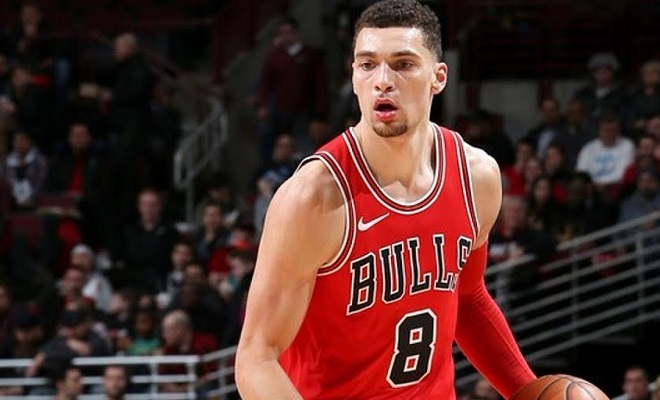-
December 9, 2020, 10:33 pm
Last Updated on December 9, 2020 10:33 pm by Erik Ong | Published: December 9, 2020
Welcome back to the Hoop Ball Huddle!
In my last Huddle, I briefly discussed how writing about fantasy basketball has been such an amazing journey for me so far. I’ve been blessed to have the opportunity to share and discuss the insights I’ve gained in the over a decade of experience I’ve managed to gain playing this highly addictive hobby.
One of the things I look forward to the most every season is the 30-Deep Experts League. I’ve been playing in that league for about six seasons now (not entirely sure, time gets blurry when you’re having fun). It’s arguably one of the most challenging fantasy drafts I participate in every year. Aside from the fact that there are 29 other teams to draft against, those aforementioned teams are being piloted by some of the most talented fantasy writers and experts in the world. Sadly, a championship in that grand arena has eluded me thus far in my career. That said, I’m no slouch and am a consistent mainstay in the playoffs for five seasons.
The 30 Deep’s commissioner, Hoop Ball’s very own Aaron Bruski recently put up a couple of items up for a vote, before we get squared away for the draft. One of the items that were voted on was applying a third-round round reverse (3RR) rule to our snake draft. This was something that was discussed in a previous season, but the platform we used did not have it as an option. This year, it does, so the rule change went to the league and as far as I roughly counted via the email replies, it has passed. I voted “yes,” by the way, just to be clear.
After studying the rule about a couple of seasons ago, I’ve come to the conclusion that it’s definitely something that is and will be good for the game as far as competitiveness is concerned. So now, you might be wondering, what the heck is this “third-round reverse rule?”
3RR
In a snake draft, the order in the third round is reversed. This means that the last team to pick in the first round picks first in the second round and then picks first again in the third round. After the reversal of flow in the third round, the snake draft proceeds as normal.

What’s the rationale behind the rule and why do leagues use this setting? First of all, it’s main intent is to balance out the top-heavy talent in the first round of fantasy drafts. After, say, the top-5 or 6 picks, there is a significant drop off in fantasy value, making getting a spot, thanks to Lady Luck, in the top-5 becomes a huge, near-overwhelming advantage over teams picking towards the end of the first round. This value gap widens the deeper the league is. For example, in our 30-deep league, imagine trying to compare a James Harden or Anthony Davis to a Zach LaVine or a Jusuf Nurkic. The disparity of value within the same first round is staggering.
The mistake people make is looking at it from the point of view that their 12th and 13th picks, assuming both were guards, are as good combined or better than James Harden. The point is that that’s comparing two players or two roster slots vs. one. The way to approach the comparison is to view the disparity between the 12th and 13th picks vs. the 1st and 24th picks’ values, assuming this was a 12-team league. The value gap, as I mentioned does widen the deeper the league is. To understand it better, the top-3 to top-5 players in the league are so much better than the average NBA player, that owning them gives a huge leg up.
So now it begs the question, “Has it become a matter of getting lucky and getting randomly assigned a top-5 pick?”
I have to issue a disclaimer though, I’ve won leagues from different draft positions, even late ones. At the end of the day, it’s how well your overall team is built that matters. But, I must add that it shouldn’t go without saying that at times when I was building around an early pick, my life was way easier.
When we apply 3RR, the teams picking last in the first round gain access to better quality mid-round picks. This, in theory, will help balance the overall fantasy values of teams, regardless of where their draft position in the first round. While it clearly adds a greater level of competitiveness in a league as deep as ours, I’ve been thinking about its viability as something to be applied to leagues with shallower depths. 18, 20-team leagues will work out as well, but how shallow would be too shallow to apply the 3RR rule?
Personally, I was able to get a chance to do a 12-team 8-cat roto draft that used 3RR this season and it felt quite good, to be honest.
That said, I’d probably go as far as 16-deep if I were going to apply it as a setting in a league that I’d run.
I’m interested in learning more about how well (or not) 3RR can provide better balance in leagues. I will keep you guys posted as to how it will impact our 30-deep league for sure.
But as of now, it already is something I’d recommend trying out, at least on a trial basis this season in 16-team leagues or deeper.
Veto Powers
I think I’ve discussed this in the past, but it’s a good time to revisit it as leagues are forming for the upcoming season. In Yahoo! there’s an option for trades to pass or be vetoed based on one of two options, either by league voting or by commissioner-only. I’ve played through my fair share of both settings and as far as I’m concerned Commissioner-only is the best, if not the only way to go.
There have been far too many occasions where I’ve seen a totally legitimate trade get vetoed for whatever reasons the managers had in casting their votes. There is a highly subjective aspect of player valuations. Some managers look at historical production while others base their preferences on future potential or upside. In most cases, leagues with league voting end up very constrained when it comes to the number of trades that are allowed.
At the end of the day, as long as there isn’t any cause to suspect collusion or the trade is not overly lopsided, then it should go through. This is why I would rather join a league that’s run by a commissioner I trust to make the wise choices when it comes to deciding which trades should be allowed or not and who is impartial enough to not be biased for trades he’s involved in.
For me, I’d rather join a no-trade league than play in a league-vote one. At the end of the day, giving the power to the masses, so to speak, only detracts from the full potential of how competitive the league can actually be. And while that may be a shame, it is what it is and is ideally avoided by everyone if possible.
So, my two cents on this matter is very clear and unequivocal, play with a commissioner-only setting as far as trades go and make sure the league is being run by someone whom you trust.
**Don’t forget to follow me on Twitter, where it’s easiest to ask me your fantasy hoops-related questions.**
